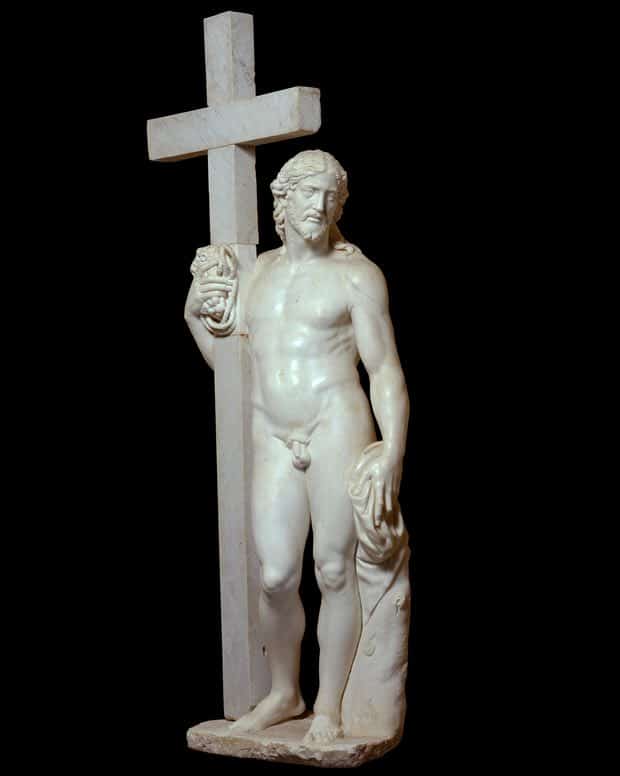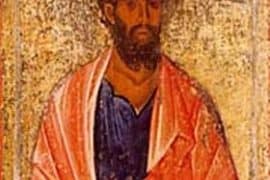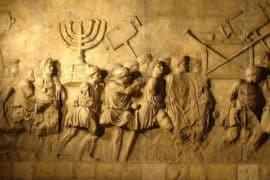I never thought much about it until looking at this lovely painting by Titian (Tiziano Vecellio c. 1500), where Jesus is ever so discretely clothed–though barely so–as his companion Mary Magdalene tries to “touch” him (John 20:11-18). The baby Jesus is regularly portrayed nude in Middle Age and Renaissance paintings, presumably to emphasize the reality of his incarnated “humanness,” but a frontally nude adult Jesus is quite another matter. [1]See Leo Steinberg, The Sexuality of Christ in Renaissance Art and in Modern Oblivion 2nd Edition, University of Chicago, 1997. Michaelangelo’s “Risen Christ,” appears totally nude, but the statue, in Rome, is awkwardly covered with an iron “veil” to hide his genitalia. A second version, however, has now been “revealed” in the National Gallery in London, with Christ in all his glory, see the Guardian story here. Jesus does appear “discretely” nude in Martin Scorsese’s controversial film, The Last Temptation of Christ (1988) when he is whipped and crucified. Mel Gibson’s The Passion of the Christ (2004) implies Jesus is naked at his resurrection–with a quick flash of his naked thigh when he rises in the tomb, but nothing clear and explicit.

I am not asking a historical question here, but rather wondering what the various accounts of Jesus’ post crucifixion “appearances” or “sightings” intend to convey. The gospels of Matthew and John relate physical encounters with Jesus just outside the tomb by Mary Magdalene alone, or by her and her companions (Matthew 28:8-10; John 20:11-17) Mark has no appearances (16:8 is the original ending) and Luke reserves the honor of such apostolic witnessing to the men alone. See my post on “The Strange Ending of Mark and Why it Makes all the Difference.”
It might seem like a trivial or silly question but it in fact touches on a very profound issue–namely the difference between Paul’s view of a spiritual body–that he characterizes as “clothed,” being raised in contrast to the rather literal–presumably physical “touch me” body–that Luke and John both emphasize. If we are going to take these accounts literally–at face value–as many urge, we seem to have a naked Jesus. Since the shroud wrapping Jesus’ corpse were left in the tomb according to John (20:6-7), we can only assume that the author intended to portray Jesus coming out of the tomb naked. Presumably this would then be his mode of appearance to Mary Magdalene (according to John) or her companions (according to Matthew). I say this “tongue in cheek” of course, but it points to a much more substantial issue–namely the nature of the notion of “resurrection” of the dead among Jews and early followers of Jesus at that time.

What is interesting is that Paul uses this very image of clothing for the new spiritual “resurrection” body in 2 Corinthians 5:2-4. For Paul Jesus has shed his physical body like old clothing left behind and his “naked” soul has been “reclothed” with a spiritual body–so that he can refer to him in such a glorified state as a “life-giving Spirit”–in contrast to the “flesh and blood” body “of dust” of our present human existence–that is both physical and corruptible (see 1 Corinthians 15:45-50).
It should also be added that Jesus himself, when questioned about the resurrection of the dead by his skeptical Sadducean opponents, implies that those worthy to attain the resurrection are neither male nor female but rather transformed to an immortal state like the angels:
And Jesus said to them, “The sons of this age marry and are given in marriage; 35 but those who are accounted worthy to attain to that age and to the resurrection from the dead neither marry nor are given in marriage, 36 for they cannot die any more, because they are equal to angels and are sons of God, being sons of the resurrection. (Luke 20:34-36; cf. Mark 12:11)
So Paul would presumably answer the question of “what kind of a body did the resurrected Jesus appear?” differently than Matthew, John, and Luke–he would say Jesus was fully re-clothed in a new spiritual body. I maintain that Paul’s affirmation that Jesus “died, was buried, and was raised” does not imply the traditional “empty tomb.” This touches on a rather complex issue that most of us have trouble sorting out, see my post “Why People Are Confused about the Earliest Christian View of Resurrection of the Dead.” It is easy to forget that it is Paul’s view that predates that of our Gospel writers by at least two or three decades–and is thus more likely representative of the original faith of Jesus’ first followers in Galilee and Judea. Thus the recently discovered Talpiot tomb inscription makes sense as a cry or a declaration of faith that from those ossuary bones God/YHVH will raise up! See the updated post here on its best translation. It is very likely, given the date of this tomb, contemporary with the apostle Paul, that it is our earliest archaeological evidence of faith in a spiritual resurrection of the dead–not merely a resuscitation of a largely intact corpse. Paul, and I would argue Jesus’ first followers in Jerusalem and Galilee, were not interested in raising up bones and flesh, but seeing the “naked” self reclothed with a new spiritual body.









Comments are closed.